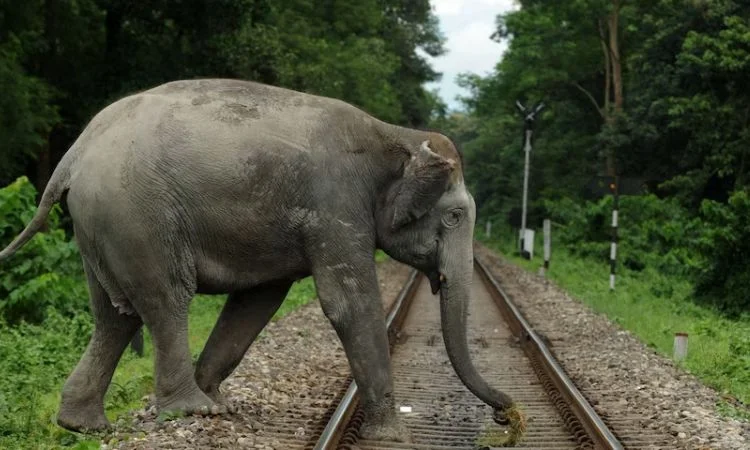Indian Railways is going to implement an AI-based surveillance system along its 700-kilometer route that passes through forested areas to reduce elephant deaths on railway tracks.
The authorities decided to install the system after a train struck three elephants in Alipurduar, North Bengal, on Monday, resulting in their deaths.
An AI-based surveillance system will be installed by Indian Railways to stop elephant deaths on train lines. There will be 700 kilometers of deployed surveillance systems along routes that cross forests.

After three elephants in Alipurduar died on Monday after a train struck them, an AI-based intrusion detection system (IDS) was anticipated to be deployed throughout the whole length of railway tracks in North Bengal. Throughout the area, railroad tracks are crossed by elephant corridors.
“We have identified forest areas in Assam, West Bengal, Odisha, Kerala, Jharkhand, and some parts of Chhattisgarh and Tamil Nadu that are home to elephants,” Railway Minister Ashwini Vaishnaw said on Wednesday. The Minister added that the technology was tested on a 150-kilometer stretch of Assam last year and proved to be highly advantageous. It was developed by the railroads in collaboration with a few start-ups.
When asked if the railways had given the system an official name, the minister responded, “You can call it ‘Gajraj System.'” The minister mentioned the system’s introduction in the NFR when speaking with reporters.
Top 5 things to understand about the surveillance system powered by AI
1. The AI-based surveillance system, according to the Railway Minister, can notify loco pilots in advance of the appearance of elephants on tracks.
2. The 700 km of tracks will require ₹181 crore to accomplish the project in its entirety.
3. Vaishaw also said that this technology has helped save a lot of elephants up to this time. “We made some improvements in the system based on our field experience, and now it detects the presence of elephants on tracks with 99.5 percent accuracy,” he said. Furthermore, he mentioned that his representatives are in communication with the forest authorities to find additional sites of this kind to broaden the project’s scope.
4. The Northeast Frontier Railway praised the technology and declared that it has eliminated elephant deaths from train crashes since it was implemented on 11 elephant routes in the Northeast earlier in September 2023.
5. In December 2022, the Northeast Frontier Railway (NFR) installed the Intrusion Detection System (IDS) in 11 elephant corridors, five of which were located in the Lumding division and six in the Alipurduar division.
The NFR reports that over the final eight months from the system’s inception in December 2022 to July of this year, 9,768 alerts were sounded, or an average of 41 alerts every day. It further stated that there have been no reports of train-elephant collisions along these 11 lines since the system’s introduction.
How is the system operated?
The train controller, station master, train drivers, and other stakeholders receive alerts from the system each time an elephant enters the track, and they take appropriate action to avert the impending risk.
According to government statistics, the majority of the nation’s 20 annual elephant deaths from train crashes occur on the Northeast Frontier Railway. According to officials, the IDS’s success gives hope that mishaps like these will eventually come to an end.
They added that installing IDS is made easier by the optical fiber cable (OFC) that the railroads have installed beneath the tracks for signaling and telecommunication. When an elephant enters the track, the OFC network-equipped equipment detects the vibration and instantly notifies the division control room and a mobile application. Elephants in motion can be identified and located by the system up to five meters away from the fiber optic wire.















